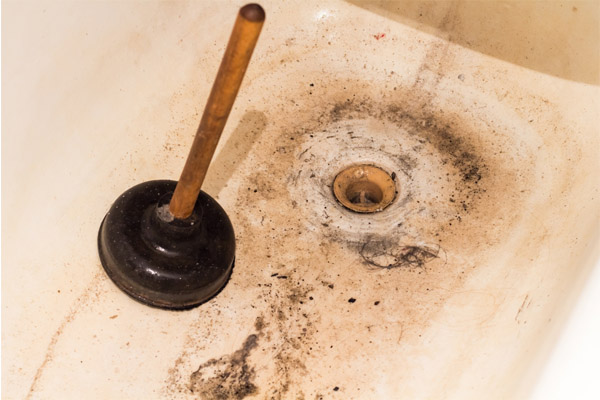Exploring the Causes of Waste Backflow in the Bathtub
Exploring the Causes of Waste Backflow in the Bathtub
Blog Article
We have discovered this article involving Why sewage is coming up through your bathtub down the page on the net and felt it made sense to talk about it with you on this page.

Sewer back-up in the tub can be a stressful and unhygienic problem for any kind of homeowner. Not just is it inconvenient, yet it likewise positions serious health threats and suggests underlying concerns with the plumbing system. Comprehending why sewer is coming up with the tub is important for taking ideal action to deal with the issue properly.
Intro to the Concern
Typical Factors for Sewage Back-up
Clogs in the Sewer Line
Among the most common sources of sewage backup is an obstruction in the sewage system line. This can take place because of the build-up of debris, oil, or foreign items in the pipes, avoiding correct flow and causing sewage to support right into your tub.
Tree Root Breach
Tree roots looking for moisture and nutrients can penetrate sewer lines via little splits or joints. With time, these roots can grow and broaden, triggering considerable damages to the pipelines and bring about sewage back-up issues.
Recognizing the Problem
When sewage starts backing up into the bathtub, it's a clear indicator of a trouble with the water drainage system. The wastewater that ought to be flowing away from your home is rather finding its way back into your home, which can cause considerable damages and carcinogen.
Prospective Causes
Numerous variables can add to sewage back-up in the tub. From obstructions in the drain line to problems with the plumbing framework, determining the origin is necessary for discovering an option.
Aging Infrastructure
Older homes may have obsoleted plumbing systems that are a lot more susceptible to rust, splits, and damage. As pipelines age, they become a lot more vulnerable to leakages and obstructions, boosting the possibility of sewage backup occurrences.
Heavy Rainfall or Flooding
Throughout periods of heavy rainfall or flooding, the sewer system might end up being overloaded with excess water, causing back-ups and overflows. This can lead to sewage backing up into bathtubs and various other components inside the home.
Indicators of Sewage Backup
Foul Odors
Undesirable odors originating from drains pipes or components, especially in the shower room, might suggest sewer backup concerns. These smells are typically solid and consistent, signifying an issue that calls for instant attention.
Slow Draining Fixtures
Tubs, sinks, and bathrooms that drain slowly or not in any way could be experiencing sewage backup. If several components are impacted at the same time, it's likely that the issue originates from an usual point, such as the main sewer line.
Gurgling Sounds
Odd gurgling or bubbling noises coming from drains when water is running elsewhere in your house are a sign of air trapped in the plumbing system. This air buildup can arise from sewage backup and ought to be examined immediately.
Health Risks Associated with Sewer Backup
Contamination of Supply Of Water
Sewage backup can infect the water system in your home, positioning a serious wellness threat to you and your household. Exposure to infected water can lead to intestinal concerns, skin infections, and other diseases.
Mold Growth
Dampness from sewer back-up can develop suitable conditions for mold and mildew growth in your home. Mold spores can exacerbate respiratory system issues and create allergic reactions in delicate people, making prompt cleanup vital.
Spread of Condition
Sewage has dangerous bacteria, infections, and parasites that can create a variety of conditions, including here liver disease, cholera, and gastroenteritis. Entering contact with sewer or infected surfaces places you at risk of infection.
Cleaning Up After Sewer Back-up
Disinfection Procedures
Thoroughly disinfect and sterilize influenced areas after sewage back-up to remove dangerous bacteria and avoid mold development. Use proper cleaning items and protective gear to ensure secure and efficient cleanup.
Remediation of Affected Areas
Fix any damages to flooring, wall surfaces, or fixtures triggered by sewer back-up. Depending upon the extent of the damage, you may need to change carpets, drywall, or other products to restore your home to its pre-loss problem.
Immediate Actions to Take
Switching Off Water
In case of sewage get more info back-up, it's important to turn off the supply of water to stop additional contamination and damages. Find the primary water shutoff valve in your house and shut it off up until the problem can be dealt with.
Calling a Specialist Plumber
Dealing with sewage backup is not a do it yourself job. Get in touch with a qualified plumber with experience in taking care of sewage-related concerns to assess the scenario and do needed repair work or cleanings.
Avoiding Contact with Infected Water
Till the sewage backup is resolved, prevent contact with infected water to stop the spread of bacteria and pathogens. Wear protective gear if you must be in the affected area and wash your hands completely later.
Preventive Measures
Normal Maintenance of Drain Lines
Set up normal inspections and upkeep of your drain lines to identify and attend to possible issues before they rise right into major troubles. This can consist of cleaning out debris, inspecting more info for tree root invasion, and fixing any kind of damaged pipelines.
Installing Backwater Valves
Take into consideration setting up backwater shutoffs in your plumbing system to prevent sewer from receding right into your home throughout periods of heavy rainfall or flooding. These valves immediately close when water draws back up, securing your residential or commercial property from contamination.
Correct Disposal of Household Waste
Avoid flushing anything besides toilet tissue and human waste down the bathroom to avoid clogs and clogs in the sewage system line. Dispose of grease, oil, and other house chemicals properly to decrease the danger of plumbing problems.
Why Is Water Backing Up in My Bathtub When I Flush My Toilet?
What to do about a sewer line clog
First, don’t bother with plunging. No amount of plunging will dislodge the clog in a sewer line. The clog is too far away. Plungers are for clogs in the toilet itself, not the sewer line. Plus, the most likely causes of a sewer clog are:
Tree roots Flushed toys or feminine products Grease buildup Those items don’t move easily. And in the case of tree roots, the roots need to be cut out of the pipe and the pipe will need to be repaired.
You’ll need a closet auger. A closet auger is a type of plumber’s snake with a protective cover to keep from scratching the delicate porcelain toilet. If the clog is further down, you may need to remove the toilet or use one of your cleanouts to get to the clog.
We also recommend doing a video inspection of the drain to ensure that the cause of the clog has been completely removed. Otherwise, you could have the same problem again in a few days or weeks.
https://mspplumbingheatingair.com/blog/why-is-water-backing-up-in-my-bathtub-when-i-flush-my-toilet

I am very intrigued by Why sewage is coming up through your bathtub and I am hoping you enjoyed reading the entire page. Liked our blog entry? Please share it. Help others check it out. Thank you for your time invested reading it.
Book Service Now
Report this page